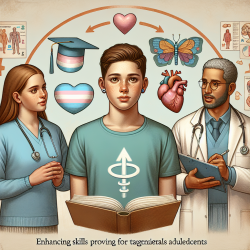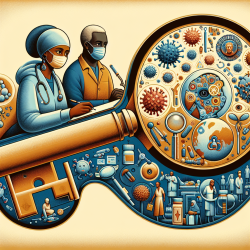Understanding Adolescent Mental Health: Key Risk Factors and Interventions
Adolescence is a critical developmental phase characterized by significant physical, emotional, and cognitive changes. During this period, individuals are particularly vulnerable to mental health disorders such as depression and anxiety. Recent research, as outlined in the study "The Research on Risk Factors for Adolescents’ Mental Health," provides valuable insights into the multifaceted risk factors contributing to these mental health issues.
Key Risk Factors
The study identifies three primary layers of risk factors impacting adolescent mental health: individual traits, family environment, and social relationships. Each layer plays a crucial role in shaping the mental well-being of adolescents.
Individual Traits
Individual characteristics such as self-esteem, self-efficacy, and perfectionism significantly influence mental health outcomes. Low self-esteem and self-efficacy are associated with higher levels of depression and anxiety. Adolescents with maladaptive perfectionism often experience increased stress and mental health issues due to their unrealistic expectations and self-criticism.
Family Environment
The family environment, including parenting styles and socioeconomic status, plays a vital role in adolescent mental health. Authoritative parenting, characterized by warmth and support, is linked to positive mental health outcomes. In contrast, authoritarian and neglectful parenting styles can lead to increased risk of depression and anxiety. Additionally, adverse childhood experiences (ACEs) and family dysfunction are strong predictors of mental health problems.
Social Relationships
Peer relationships and school climate significantly impact adolescent mental health. Positive peer interactions and a supportive school environment are associated with better mental health outcomes. Conversely, peer victimization and bullying are linked to increased anxiety and depression. The study emphasizes the importance of fostering healthy peer relationships and a positive school climate to mitigate these risks.
Implications for Practitioners
Practitioners working with adolescents can enhance their skills by implementing strategies informed by this research. Key interventions include:
- Promoting self-esteem and self-efficacy through cognitive-behavioral approaches.
- Encouraging positive parenting practices and family involvement in adolescents' lives.
- Facilitating supportive peer interactions and a positive school climate.
Additionally, practitioners are encouraged to engage in further research to explore innovative interventions and prevention strategies tailored to the unique needs of adolescents.
To read the original research paper, please follow this link: The Research on Risk Factors for Adolescents’ Mental Health.










